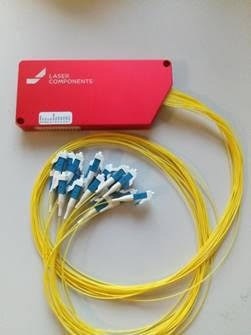Optical fibre switches will play an ever-increasing role in future network deployments for routing, protection, bypass, remote monitoring, sensing, and testing, used in data traffic routing, and cross connects with the future potential of wavelength routing. They currently play an important role in the testing of optical components.

Image Credit: LASER COMPONENTS
Optical fibre switches come in all shapes and sizes with a range of technologies and techniques that need consideration when deciding which FO switch best meets application requirements. Fibre compatibility is vital to ensure minimal losses. This is just one of the many considerations for 1 X N, N X M configurations.
There are versions based on moving parts, repeatability and stability play a major part in their selection. Solid state non mechanical are well suited to specific higher switching speed applications. There are different technologies and techniques such as thermal activated, prism switched, optomechanical, magneto-optic, and mechanical V grove alignment/stepper motor.
Most common switches are V groove alignment (direct fibre alignment), prism (micromechanical), beam steering techniques and MEMs, these are optomechanical. High speed switches have no moving parts and rely on organic materials in the light path, both electro-optic and magneto-optic technologies are used.
Future developments in large NxM switch arrays, include SMART capabilities such as wavelength routing, and the need to develop compact large arrays for datacentre installations with smaller switches needed for network deployment. Developments in faster switching speeds along with cost reduction are key, cost reductions are necessary for large scale remote switching roll out into the network and PON. There is a need for improved return loss (reduced reflections) performance for narrow linewidth lasers and high-speed modulators intended for future telecommunications. Surface reflections resulting from the light path components within the switch can be AR coated to reduce the effect caused by glass to air interfaces, other options include index matching. These are all undergoing development to meet future network requirements.
For further information Optical Switches (lasercomponents.com)